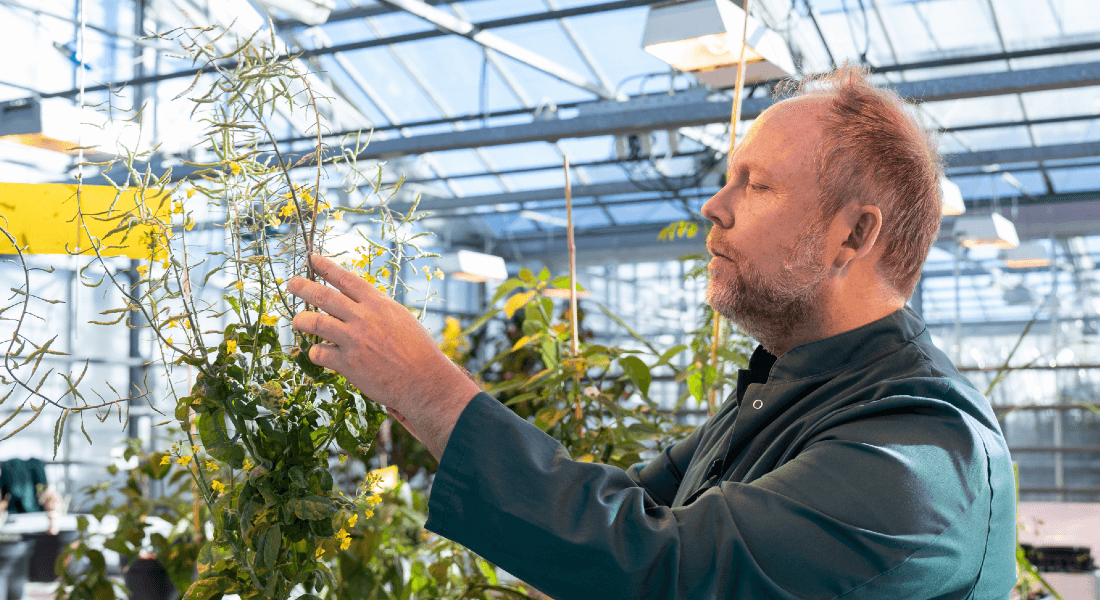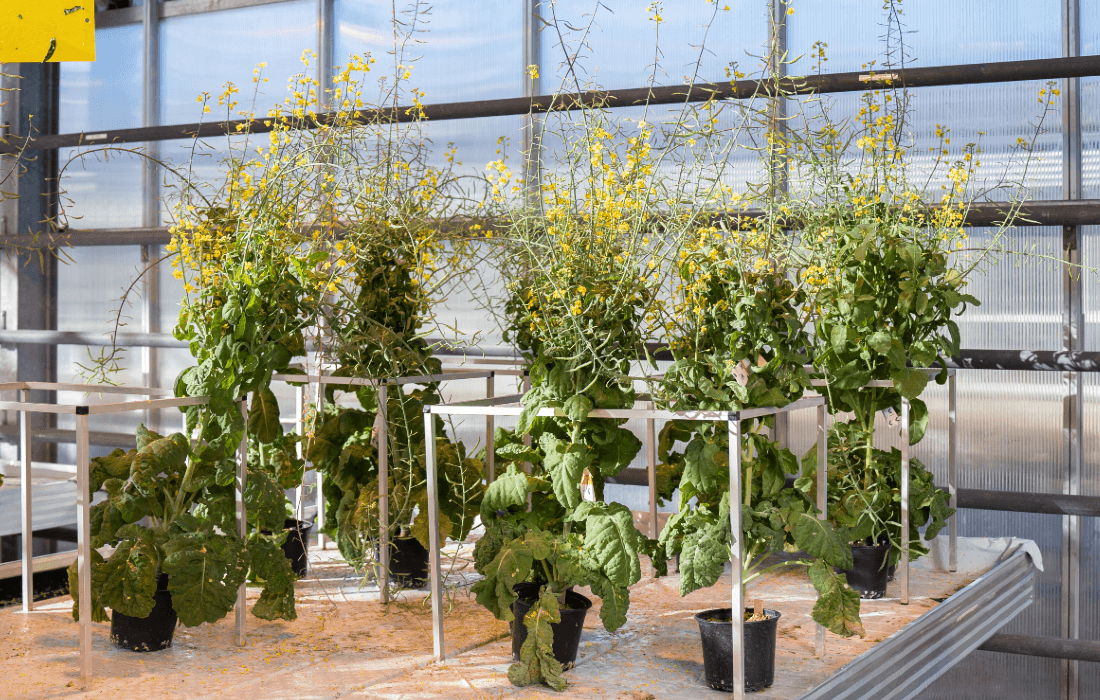Incredible bacterium can transfer its genes into plants and give them superpowers
Humans have bred for desirable plant and animal traits for millennia by selecting and crossing their offspring. Now, researchers at the University of Copenhagen are taking a natural shortcut to promote beneficial changes using a special bacterium that can transfer its genes into plants.

Millions of years ago, a unique bacterium found its way to the surface of a root vegetable – perhaps somewhere in Central or South America. It catalyzed a kind of outgrowth of long roots. One day, one of the roots sprouted and developed into a new plant with new characteristics.
This is the abbreviated story of how one of our most ancient crops came to be. A plant whose tubers we now know as sweet potatoes. Tea and numerous other plants have undergone similar transformations. What they have in common is that they received new genes and traits from Rhizobium rhizogenes, a bacterium with the special ability to transfer its genes into host plants, and by doing so, transforming them.
"This incredible bacterium can insert some of its genes into plants in a process called transformation. This can offer a range of new advantages – and at times, some disadvantages. As researchers, we can recreate and accelerate this process and select the best results to produce improved flowering plants, crops, foods and much more in a very natural way, just as nature did millions of years ago," explains Henrik Lütken of the University of Copenhagen’s Department of Plant and Environmental Sciences.
Lütken likes to refer to Rhizobium rhizogenes as his “favorite bacterium", and working with his bacterial bestie has borne fruit for him in the form of tangible results and even greater possibilities for the future. Among other things, his research team has used the bacterium to breed potted kalanchoe plants which are more compact – a trait desired by the horticultural sector.
"Conventionally, chemical growth inhibitors have been used to achieve the same results, but with the help of this bacterium and its genes, we have developed plants in which these traits are inherent. Indeed, they are now ready to come to market," says Henrik Lütken.
Drought resistance can help EU crops
While working with the potted plants, Lütken and his research team noticed that the transformed plants also had significantly more and longer roots, which sparked a hypothesis: maybe the bacterial genes could help make plants more drought resistant.
"We are now in the process of proving this in a “Villum experiment” project, by testing both wild and naturally altered plants in a drought experiment," explains Lütken.

The results could prove important. Climate change has already put a wide variety of crops under pressure in southern Europe and the EU remains closed to genetically modified crops.
If European anti-GMO policies are maintained, Rhizobium rhizogenes could help accelerate a more natural development of drought-resistant crops, as the method does not alter the bacterium's natural genetics. Hence, it does not fall under GMO definitions.
"So far, we’ve achieved positive results in transformations of oilseed rape, where despite slightly lower yields, we believe that better oils and strengthened root systems will make the plant more drought resistant. Oilseed rape is an extensively grown and important crop in Denmark. However there are Southern Europe crops that could be interesting to work with as well," says Henrik Lütken.
One of these is rocket salad, an important winter crop in Italy and other drought prone European countries. In recent years, the plant has come under climatic pressure as a result of decreased precipitation. According to Lütken, as rocket salad is related to rapeseed, there may be good opportunities to develop drought-resistant versions of the peppery plant using his favorite bacterium.
Shakes up the understanding of GMOs
Humans have been modifying plant traits for thousands of years. Consider the vast array of delicious apples available to us, whose origin was a small sour fruit that no one really enjoyed taking a bite of tens of thousands of years ago. By growing and crossing the largest, nicest and tastiest specimens, humans gradually changed apple trees to accommodate their needs and tastes. In recent times, GMOs have become a faster, and – some would say – more radical approach.
"Transformations with the Rhizobium rhizogenes bacterium may fall somewhere in between. The bacterium’s genes speed up the changes we are able to make, so it's basically an accelerated natural process. Although here, the process is wild - and, one in which both good and bad traits emerge. The good specimens can then be cultivated and crossed with each other to eventually be left with plants characterized predominantly by their advantageous traits," says Lütken.
Facts: The bacterium acts for its own sake
According to Henrik Lütken, the bacterium transfers its genes to plants because the outgrowths, which are the immediate result, are hairy roots that stick out and develop nutrients for the bacteria to live on.
How and why bacteria like Rhizobium rhizogenes are able to insert genes into organisms so distant from themselves, such as plants, is an active area of research with many unanswered questions. However, among other things, it is clear that Rhizobium rhizogenes cannot transfer its genes to humans.
We already consume foods whose genes have been evolutionarily influenced by Rhizobium rhizogenes and the method has already made its mark on foodstuffs. Nevertheless, Henrik Lütken stresses that moving from potted plants to foodstuffs is a big step that needs to be managed properly.
"This method shakes up how we designate something as GMO or not. It pushes boundaries and makes the whole issue less black and white. In the slightly longer term, there are clearly perspectives for food crops, but as we move from ornamental plants to plants for food, it is crucial that we communicate well with both the public authorities and other interested parties. It is important that everything is checked across the board," he says.
How the researchers do it: an arranged date
Sterilized plant cuttings, cleansed of any other bacteria, are dipped (inoculated) in a liquid solution with the bacterium.
After a couple of days, the bacterium has inserted its genes, just as it does naturally, for its own benefit. This is the part known as transformation. Then it is time for the bacterium to be removed so that it doesn't take over and end up harming the plant.
Eventually, hairy roots begin to grow out, which can be cut off and grown further.
Hormones are then added to these roots to "persuade" them to grow shoots. These hormones already exist in the plant, but by changing the balance, the roots can be helped along in the process.
Finally, the tiny shoots are planted into soil, where they grow into new plants.
Contact
Henrik Vlk Lütken
Associate Professor
Section for Crop Sciences
Department of Plant and Environmental Sciences
University of Copenhagen
hlm@plen.ku.dk
Tel: 35 33 20 06
Kristian Bjørn-Hansen
Journalist and press contact
The Faculty of Natural and Life Sciences
University of Copenhagen
kbh@science.ku.dk
Tel: 93 51 60 02
